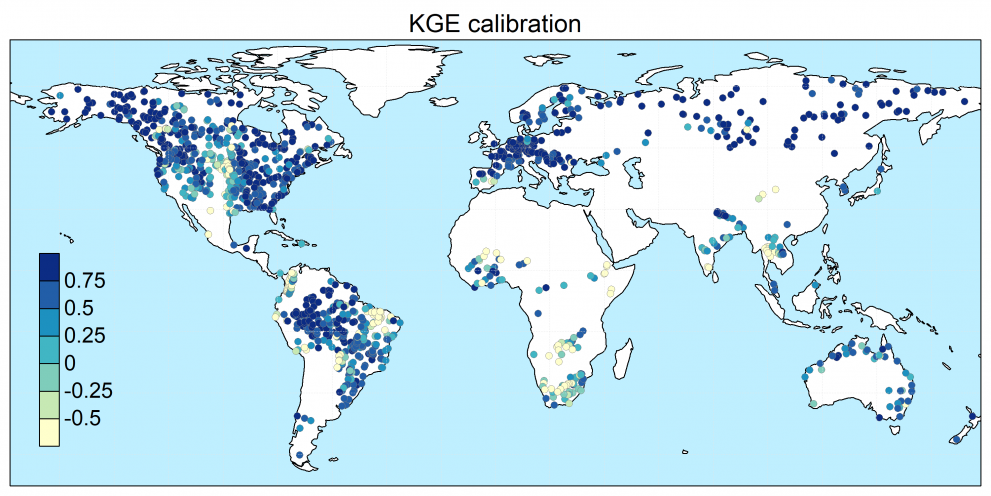
The JRC has released a new dataset of daily stream flows in all large world rivers for the period 1980- 2018, opening new opportunities in the assessment of global water resources and natural hazards.
Knowledge of the hydrological states in our planet and their variability in space and time is key information for a variety of challenges related to, for example, water resources, natural hazards, biodiversity and energy production. The JRC’s newly released GloFAS Reanalysis v3.0 dataset uses a modeling approach to reproduce daily stream flows in the world’s rivers for the past 40 years.
The new dataset will be used to 1) derive climatological features of river stream flows around the world (e.g. average conditions, extremes, flood thresholds, seasonality); 2) initialize hydrological forecasts; and 3) evaluate streamflow forecasts.
The new dataset brings significant improvements over the previous versions, thanks to a new modeling framework, improved atmospheric input and a revised calibration procedure.
Model framework
The GloFAS Reanalysis v3.0 dataset was produced with Lisflood, a spatially distributed hydrological rainfall-runoff-routing model developed by the JRC. Lisflood was specifically designed for large scale applications and has been used in a number of European and Global scale studies ranging from climate change studies, flood risk assessments and operational flood early warning systems. Lisflood was recently released as fully open-source model.
Atmospheric input
Hydrological simulations were produced using weather data from ERA5, the fifth generation of atmospheric reanalysis of the European Centre for Medium-Range Weather Forecasts (ECMWF). ERA5 includes estimates of several meteorological variables including precipitation, air temperature, relative humidity, solar radiation, and wind speed, among others, which were used as input for the hydrological simulation.
Calibration procedure
The model was calibrated using observed daily flows at 1226 river sections with a total drainage area of 51 million km2 within 66 countries in six continents. It includes an efficient quality control and filtering on the observation database, to maximize the benefits of observed data on the model results and prevent poor quality data from affecting the model output.
The Global Flood Awareness System (GloFAS)
The GloFAS Reanalysis v3.0 dataset was produced in the context of the Global Flood Awareness System (GloFAS), part of the Copernicus Emergency Management Service. GloFAS is an operational system for global stream flow modeling, forecasting, and flood early detection in large rivers, with a forecast horizon up to 30 days and a seasonal outlook up to 4 months ahead.
The GloFAS Reanalysis v3.0 dataset 1980-2018 is available for download through the JRC Data Catalogue. Its extension to the present day, as well as the near real time updates, will be regularly produced and made available through the Copernicus Climate Data Store once the operational version is released, foreseen for Spring 2020.
Related links:
Details
- Publication date
- 20 December 2019
